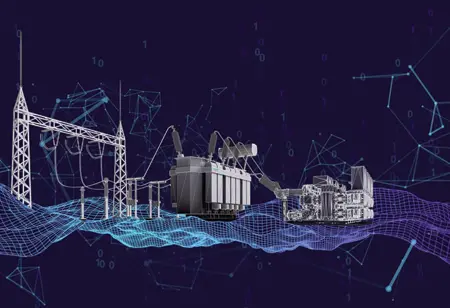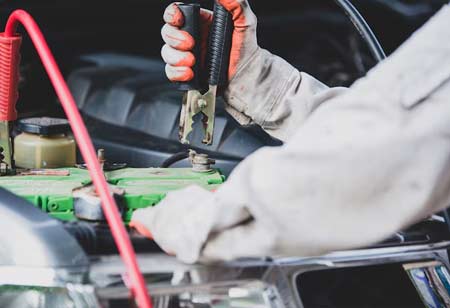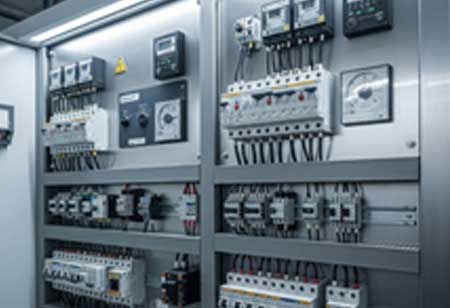Thank you for Subscribing to Electrical Business Review Weekly Brief
I agree We use cookies on this website to enhance your user experience. By clicking any link on this page you are giving your consent for us to set cookies. More info
Driving Change: The Future of Electric Motor Repair and Distribution
The electric motor repair and distribution industry is evolving with trends in sustainability, energy efficiency, and advanced technologies, while also facing challenges in complexity, skilled labor, and compliance with regulations.

By
Electrical Business Review | Wednesday, July 16, 2025
Stay ahead of the industry with exclusive feature stories on the top companies, expert insights and the latest news delivered straight to your inbox. Subscribe today.
Electric motor repair and distributor services are essential to industrial and commercial infrastructure, supporting continuous operations across sectors that rely heavily on electric motor-driven systems. Electric motors play a crucial role in maintaining productivity and reliability, from powering production lines to ensuring the efficiency of HVAC systems and transportation equipment. As industries continue to evolve toward automation, sustainability, and energy efficiency, the demand for expert repair services and dependable motor distribution networks has grown steadily.
Prevailing Industry Dynamics
The electric motor repair and distributor service industry continues to serve as a backbone to various industrial operations, including manufacturing, mining, energy production, water treatment, and transportation. These sectors rely heavily on electric motors for efficiency, precision, and productivity, sustaining a consistent need for reliable repair services and well-structured distribution channels. The demand for services has grown with the increasing sophistication of motors used in automation, robotics, HVAC systems, and renewable energy applications.
Several positive trends shape the industry's trajectory. A growing emphasis on operational uptime has led many companies to prioritize timely repair and maintenance over complete replacement. Sustainability concerns are steering industries toward extending the life cycle of existing motors through refurbishment and retrofitting, expanding the scope of the repair market. On the distribution side, there's a greater focus on inventory responsiveness, compatibility assurance, and customer-specific solutions, especially as manufacturers seek motors tailored to their operational environments.
Another key trend is the shift toward energy-efficient motors, which meet stringent standards for power consumption and environmental compliance. As industries move away from outdated systems, repair services are increasingly requested to upgrade or retrofit legacy equipment. Distributors, in turn, are expanding their inventories to include newer, more sustainable motor models. This dual progression reflects a growing and evolving market to meet the expectations of a more energy-conscious clientele.
Industry Hurdles and Effective Responses
Despite its positive momentum, the electric motor repair and distributor service industry faces several operational and technical challenges. One significant challenge is the growing complexity of modern electric motors, which now integrate electronic control systems, smart sensors, and software-based diagnostics. Servicing such equipment requires highly specialized knowledge, tools, and procedures. A lack of skilled technicians with expertise in traditional and digital motor systems can hinder the ability to meet growing service demands.
Many repair centers invest in structured training programs and apprenticeships to overcome this. Companies ensure a steady influx of qualified personnel by partnering with technical institutes and vocational programs. Ongoing education for existing technicians helps maintain competency with emerging technologies. Access to manufacturer-specific repair protocols and advanced diagnostic tools is also being improved through licensing agreements and collaborative training efforts.
Another challenge is the logistical complexity associated with component sourcing. Certain motor parts, especially those used in older or custom-built models, may not be readily available, leading to delays in repair timelines. Distributors have responded by leveraging advanced inventory management systems that predict demand patterns and streamline procurement. Real-time tracking and cloud-based platforms allow faster sourcing and more transparent supply chains. In some cases, additive manufacturing technologies such as 3D printing fabricate hard-to-find components, ensuring service continuity.
Ensuring compliance with energy efficiency and safety standards is a necessary yet intricate part of motor repair and distribution. Regulations surrounding noise levels, thermal management, and emissions standards require updated knowledge and precision in repair practices. Service providers address this by incorporating regulatory checks into standard procedures and offering compliance-oriented upgrades during maintenance cycles. Distributors are also playing their part by labeling and categorizing products based on updated compliance metrics, making it easier for clients to select the correct motor type.
Advancements Creating New Avenues for Stakeholders
The electric motor repair and distributor service sector is witnessing a period of remarkable innovation and opportunity. Integrating digital tools into motor systems and service operations transforms how repairs are conducted and how parts are distributed. Predictive maintenance technologies, powered by IoT-enabled sensors, are now embedded into many electric motors. These sensors monitor temperature, vibration, and current conditions, sending real-time data to centralized systems. Anomalies can be flagged well before a motor fails, allowing for targeted and efficient repairs.
This technology benefits stakeholders by reducing unscheduled downtimes, extending motor lifespans, and lowering long-term operational costs. Repair centers can now use this data to diagnose issues remotely, prepare necessary tools in advance, and even pre-order parts before physical inspection, making the entire process more streamlined. Distributors can also utilize this predictive data to stock parts based on real-time demand indicators, ensuring product availability aligns closely with customer needs.
Another significant development is the adoption of digital twin technology. This incorporates building a virtual model of a motor that replicates its behavior and usage conditions. Technicians can simulate wear and failure scenarios, test repair strategies, and validate performance outcomes without physically intervening. This level of insight enhances repair accuracy and reduces trial-and-error methods. It also builds confidence among stakeholders, who are reassured by evidence-based service processes.








